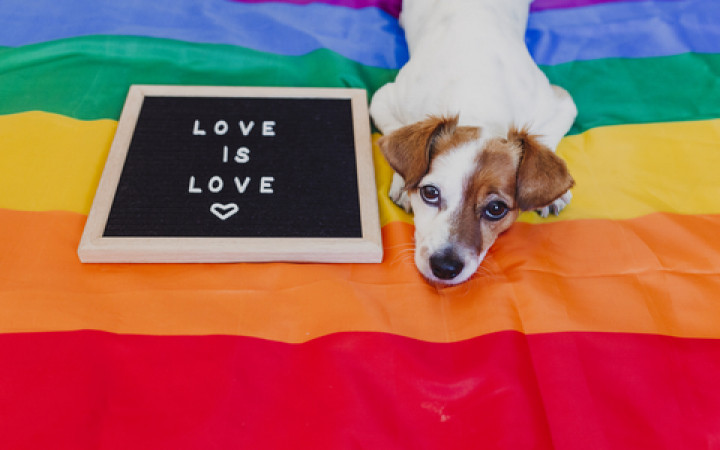Today’s Wonder of the Day was inspired by Jenny. Jenny Wonders, “What is pride month?” Thanks for WONDERing with us, Jenny!
It’s June, and you might be seeing rainbows everywhere! We love rainbows any time of year, but in June, it usually means that we’re celebrating Pride Month. You may be WONDERing, what is Pride Month? And why are we celebrating it?
Let’s take a trip back in time to the 1950s. For a long time, it had been illegal for LGBTQ+ people to do many things across the U.S. They could not marry each other, dress how they preferred to, or even gather in places together. Still, many LGBTQ+ people did gather in secret. In New York City, one such gathering place was the Stonewall Inn. Police knew of places like the Stonewall Inn and often came to arrest LGBTQ+ people who were there. Police raids of LGBTQ+ gathering places happened often, across the country.
On the night of June 28, 1969, police came to raid the Stonewall Inn as they had before. But this time, the people they tried to arrest did not go quietly. They resisted. Others near the Inn also protested. The Inn itself was even lit on fire! Eventually, police arrested several people. But the protests continued for several days. The Stonewall uprising was not the first time that LGBTQ+ people had resisted. In fact, there were protests like it going back to 1955! But this time, something had changed. Stonewall was the start of new kinds of organized protest for equal rights for people who are part of the LGBTQ+ community.
Exactly one year after the Stonewall riots, LGBTQ+ organizers held a march in New York City. They decided that the theme for the march would be “pride.” Protestors wanted to show onlookers that they were proud of who they were. Marches were also held in other cities, such as Los Angeles, Chicago, and San Francisco. Many large cities in the U.S. began holding marches on the last Sunday in June. Over time, these marches turned into bigger celebrations.
In 1999, President Clinton officially recognized the month of June as “Pride Month.” In his declaration, he noted the struggles of LGBTQ+ people for rights and safety in all areas of life. Pride Month has been celebrated ever since! These celebrations are not just for LGBTQ+ people, though. Since the beginning of pride marches, family members, friends, and other allies have protested and celebrated as well.
Of course, there have been many changes in LGBTQ+ rights in the U.S. since 1969. Those rights were not granted without many years of protests by LGBTQ+ people and their allies. For example, activists protested for laws to protect LGBTQ+ people from discrimination at work. For a long time, LGBTQ+ activists and allies fought for the right to same-sex relationships. In 2015, the Supreme Court ruled that same-sex marriage is legal in the U.S. Many years of protests and marches—including Pride Marches—helped LGBTQ+ people become more visible in society. That helped change many Americans’ minds about what rights and protections LGBTQ+ people should have.
Now, many cities and towns across America celebrate Pride Month. In fact, countries all over the world recognize Pride Month, although not always in June. What does Pride look like now? There may be celebrations in parks or in other public places. Local organizations may hold festivals, concerts, or other events. You might see local stores or television stations decorated with rainbows as a symbol of their support. Do you celebrate Pride Month? What does Pride Month look like in your community?
Standards: CCRA.R.1, CCRA.R.2, CCRA.R.3, CCRA.R.10, CCRA.L.3, CCRA.L.4, CCRA.L.5, CCRA.L.6, C3.D2.Civ.3, C3.D2.Civ.8, SEL.3, SEL.4, NCAS.CR.1, NCAS.CR.2




